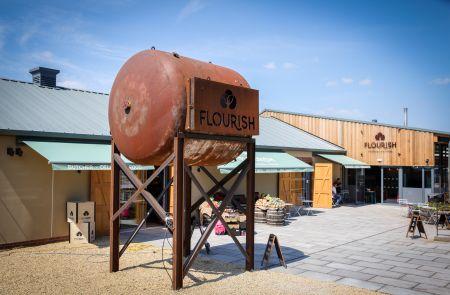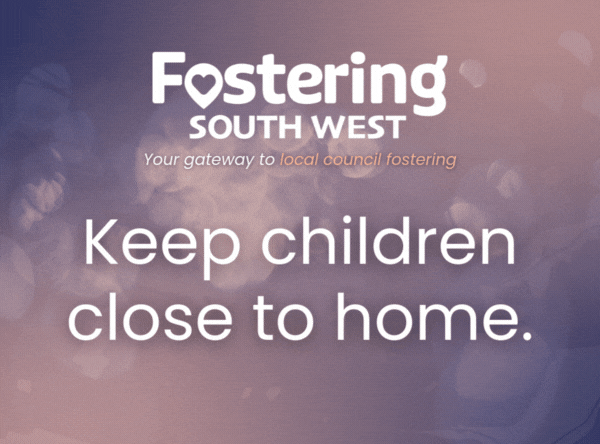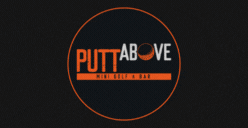Coffee Roasters And The Art Of The Roast With Rory Ireland
As coffee roasters, we wanted to give you a closer insight into our coffee roastery and what better way than to ask Rory Ireland some questions.
When we started Bristol Twenty Coffee Company, we knew that we wanted quality and responsibility to define us. But when we took the leap to roast our own coffee in 2014, that idea of responsibility became paramount. We had to decide how to maintain a focus on quality coffee while being responsible members of the complex supply chain that is coffee. Our coffee roastery is used to create our amazing classic blends as well as some seasonal roasts.
What sparked your interest in coffee roasting?
I have always loved coffee, but it took me a little while to realise my passion. I was originally working in the restaurant trade as an openings manager which involved setting up, staffing and getting new restaurants running well. It was long hours (lots of coffee), lots of travelling, being in different cities and I’d got to a stage where I was burning out. At the same time, Dad was receiving treatment for his second lot of cancer and needed some help running his coffee business.
Chris had already returned a few years before to help with the engineering, so I offered to help out for 6-8 months; that was 16 years ago. As I discovered the world of coffee I was hooked. I started the SCA (Specialty Coffee Association) diploma that had a roasting module and that’s when I knew I wanted to get involved. At the time we were selling another roasters coffee, which was great, but I really wanted us to be able to do our own thing, so we did.
How do roasters work?
There are a few different types of roasters but we use a Toper drum roaster. It’s basically like a huge washing machine with a direct heat source at the bottom. As the drum turns it keeps the beans in constant circulation so as to get an even roast.
What happens to the beans when you roast them?
As coffee roasters in Bristol, we import coffee as green beans, which are dried, hard and tasteless seeds from the berries of the coffea plant. Roasting them at a high temperature brings out all of those hidden flavours and aromas.
When the beans enter the roaster they have a quite high moisture content, during the roasting process, the beans slowly release that moisture which breaks down the cells of the bean releasing the sugars, proteins and acids within.
For the first part of the roast, the process is endothermic so the beans are absorbing heat. This slowly decreases until the ‘first crack’, where almost like popcorn, the beans cells are breaking down and you get a cracking sound.
After this point, the process becomes exothermic so the beans start giving off heat. As coffee roasters, the trick is to time it perfectly at this point to get the best out of the bean
What is a roast profile and how do you decide on one?
Each coffee and blend we roast has a profile. This is the guide we use to get a consistent roast; so every time we roast our Formula 442 it will taste the same. The profile guides us on when to apply heat, or air and at what point to dump the beans (ie finish the roast). This is any roaster’s holy grail and kept very close to their chests.
The profile will change depending on the weather, the beans, the time of day they are roasted etc so its a very reactive process. As coffee roasters we are always tweaking the profile to improve the roast of the coffee.
I have a base roast for any new coffee that comes in. I will roast to that first to see how the bean reacts and how it tastes when cupped. After that I will adjust the profile to bring out certain qualities in the cup that are desirable. Over the years I have learnt by trial and error on generally what will work, but every new bean is different so I am constantly learning, which I love.
Do you have a favourite origin country for your beans and why?
Coffee is so complex. Some of the most complex fine wines have around 250 molecular compounds contributing to their flavour and aroma. Coffee can produce more than 800. Each origin has a rough flavour profile of its own, because of the terroir. However, within that origin, the coffees can vary dramatically on taste depending on the variety, altitude, soil etc. I am constantly finding my new favourite, however, I tend to veer towards central America for my go-to coffee because they tend to have those more traditional flavours associated with coffee. One of my favourites at the moment is our Honduras SHG from COMSA co-op. We’ve been working directly with them for 18 months and they produce some amazing coffee in a very sustainable way.
Do you have a favourite origin country for your beans and why?
Coffee is so complex. Some of the most complex fine wines have around 250 molecular compounds contributing to their flavour and aroma. Coffee can produce more than 800. Each origin has a rough flavour profile of its own, because of the terroir. However, within that origin, the coffees can vary dramatically on taste depending on the variety, altitude, soil etc. I am constantly finding my new favourite, however, I tend to veer towards central America for my go-to coffee because they tend to have those more traditional flavours associated with coffee. One of my favourites at the moment is our Honduras SHG from COMSA co-op. We’ve been working directly with them for 18 months and they produce some amazing coffee in a very sustainable way.
What is your current favourite blend?
Again this changes daily, but I always tend to go back to our 21 TEN blend. It means so much to us, being dedicated to Dad and going to support his favourite charity Above & Beyond. But apart from that I love the fruit and nut flavour that it has, its like dipping into a chocolate bar without the calories.

















